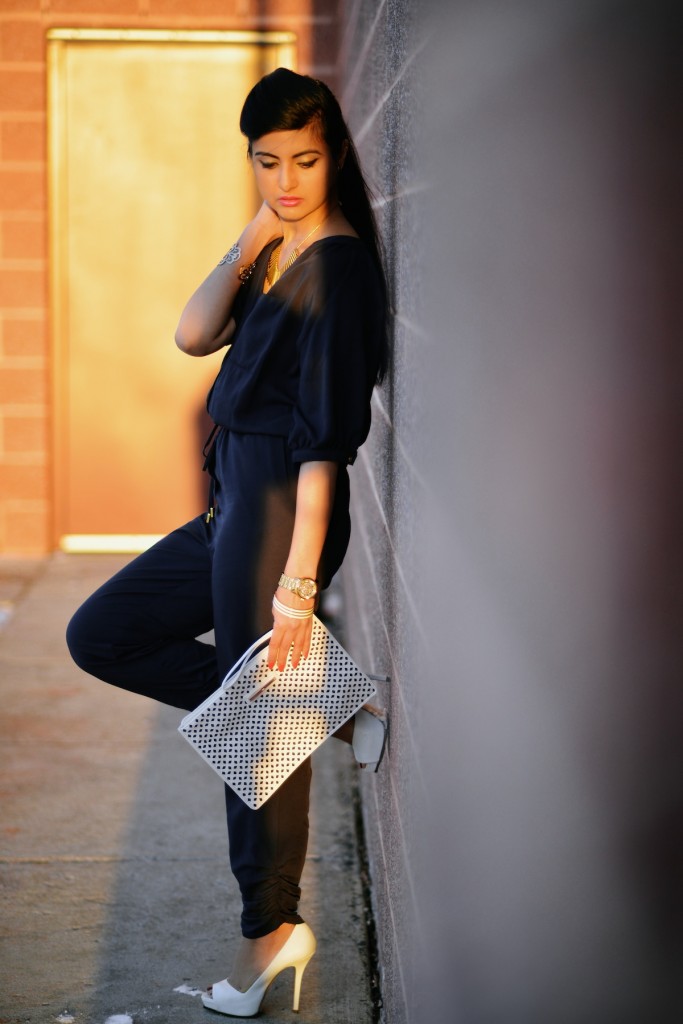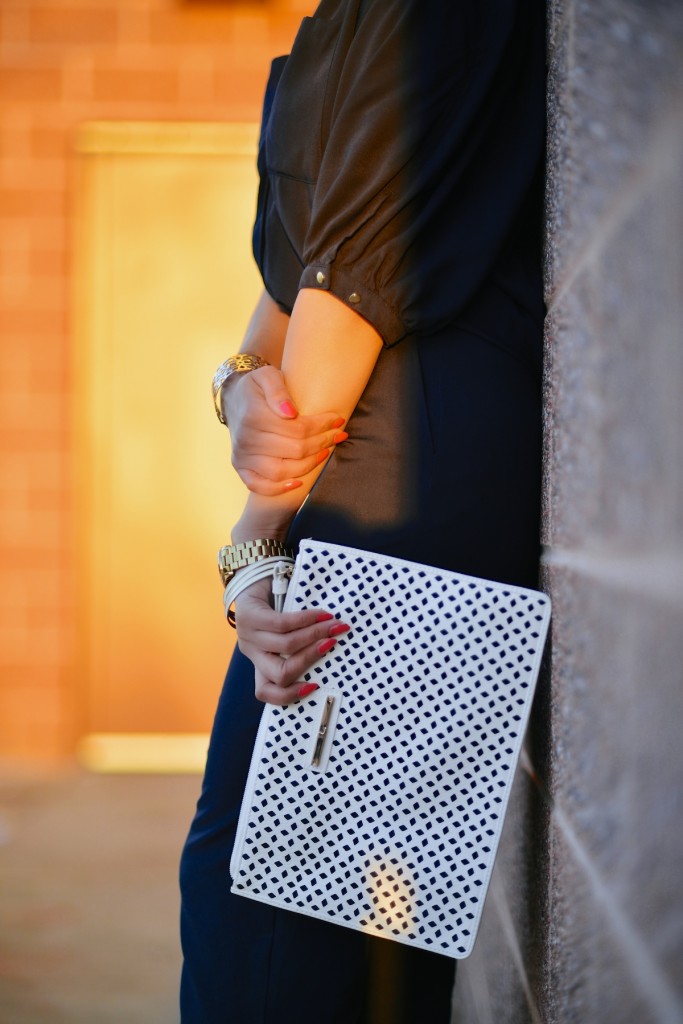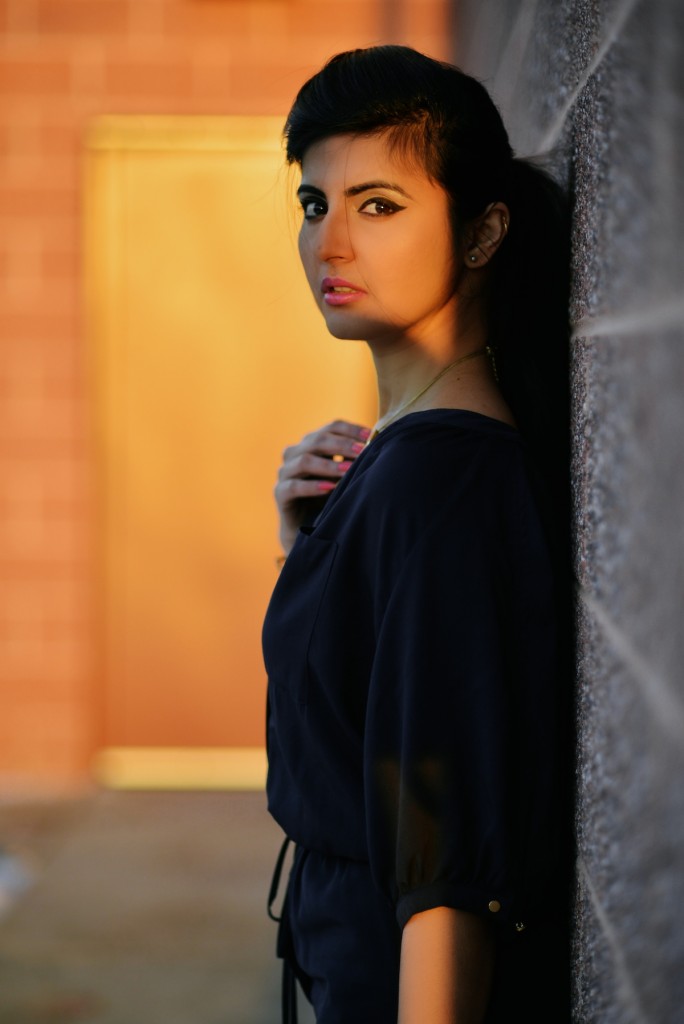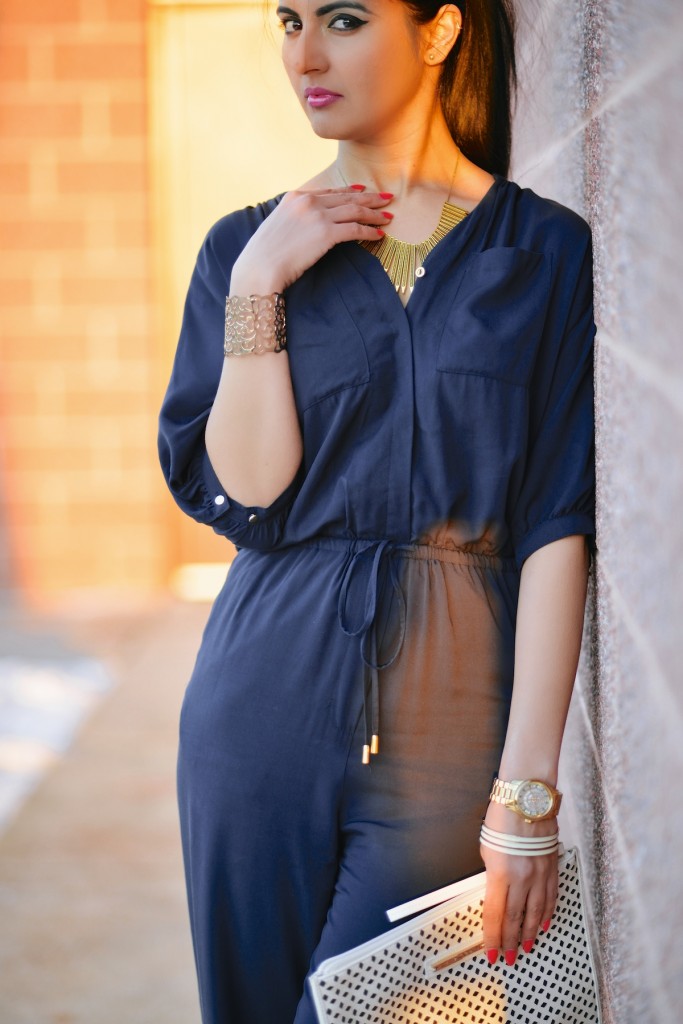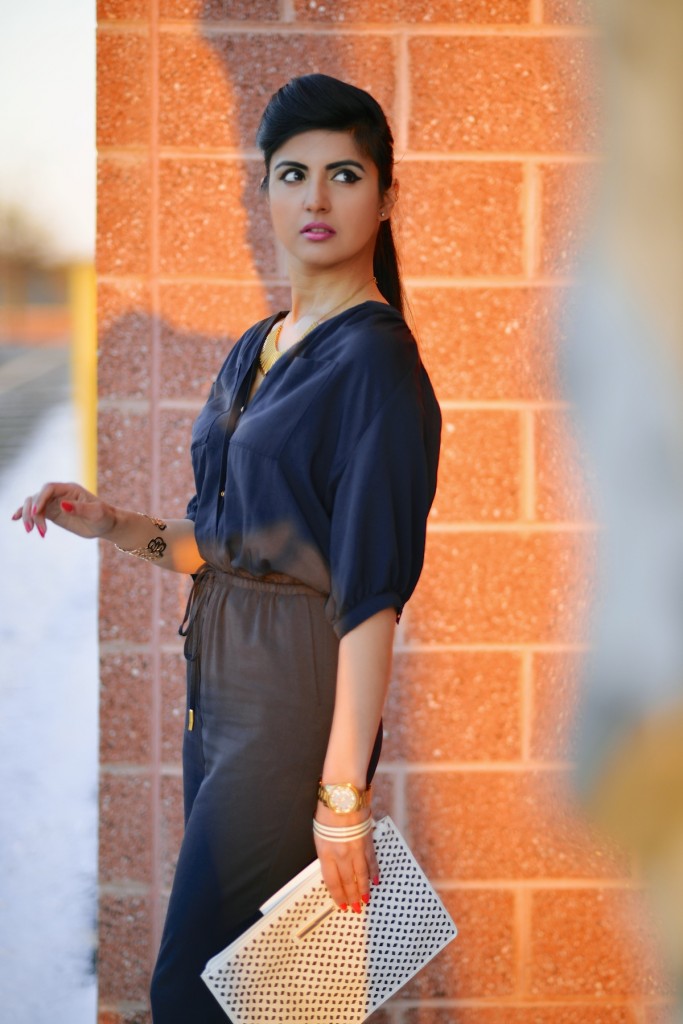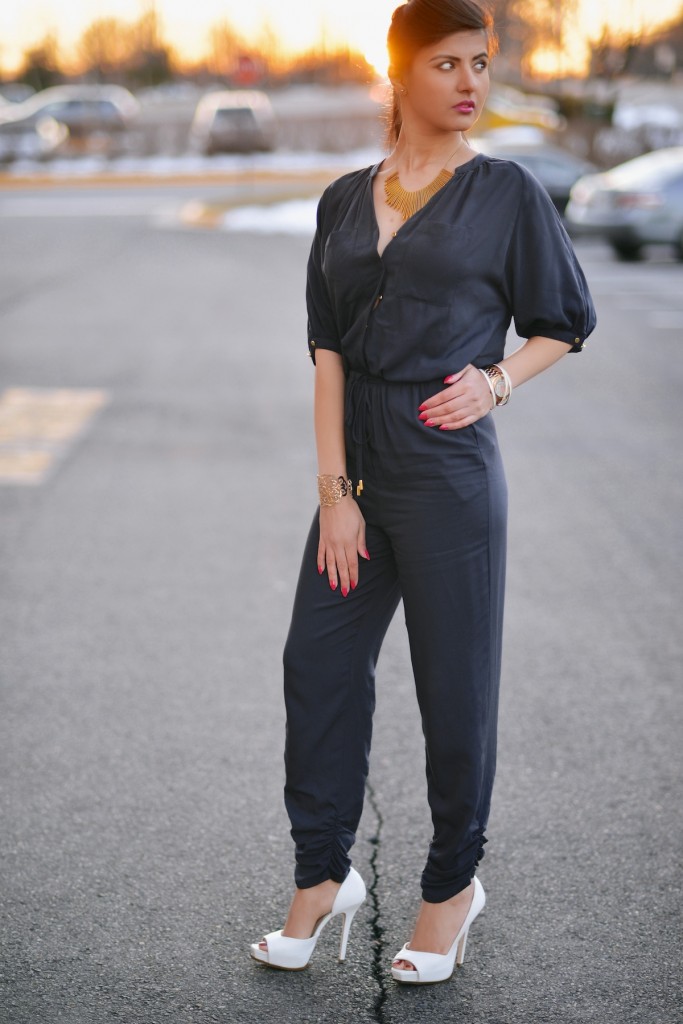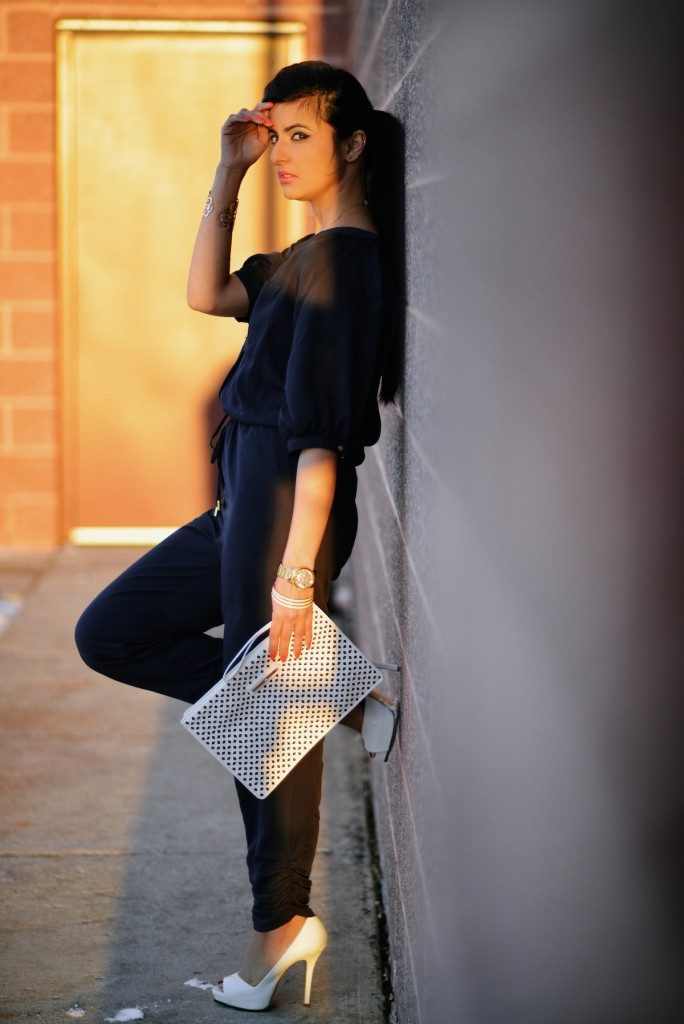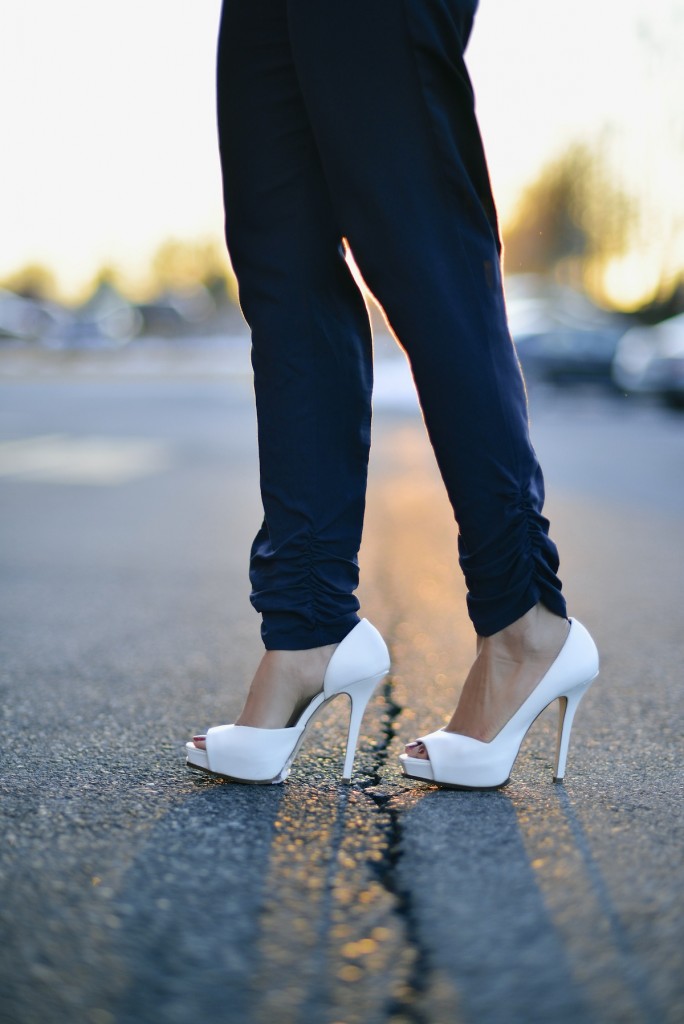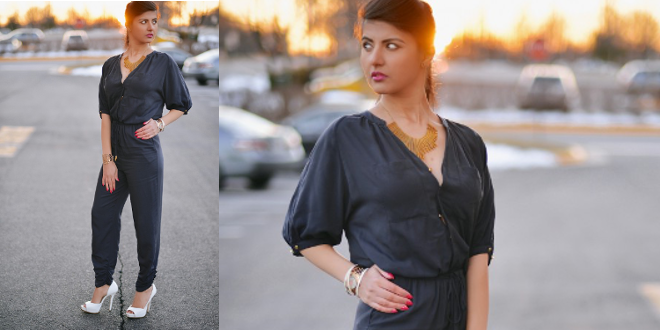
by Zunera Mazhar – Follow @ZuneraSerena
Happy Weekend, BG’ers! I am so in love with jumpsuits for the spring. They are making a big come back along with flared pants and bellbottoms. Not to mention, floral pants are also all the rage this season.
For this look, I loved putting together this simple and on-budget ruched jumpsuit with tiny details. Even better, the loose fit gives it the perfect comfort level.
After trying on a few necklaces, I opted for a more metallic statement necklace along with other gold accessories and a statement white-bedazzled clutch with matching white open-toe pumps.
Try this look for your next date or Sunday brunch wit girlfriends. And, for more daily fashion inspiration, visit my blog Zunera&Serena.
Shop the same or similar look here:
[Jumpsuit – Similar here and here]
[Heels – Nine West]
[Jewelry – Similar here]
[divider]
 Zunera Mazhar is the highest earning fashion blogger in Washington D.C. Her blog, Zunera & Serena, is about fashion, inspiration, confidence and she occasionally includes photos of her five-year-old fashionista, Serena! The blog has been featured on ABC, FOX and she is a featured guest on CNN. She has worked with some of the top designers and retailers in the fashion industry and is the international brand ambassador of “Labels.” She contributes/writes for Self Magazine, AOL’s Stylelist. and POPSugar. When she is not blogging, she works as a program manager for Refugee Asylum and International Operations for the U.S. Immigration Services.
Zunera Mazhar is the highest earning fashion blogger in Washington D.C. Her blog, Zunera & Serena, is about fashion, inspiration, confidence and she occasionally includes photos of her five-year-old fashionista, Serena! The blog has been featured on ABC, FOX and she is a featured guest on CNN. She has worked with some of the top designers and retailers in the fashion industry and is the international brand ambassador of “Labels.” She contributes/writes for Self Magazine, AOL’s Stylelist. and POPSugar. When she is not blogging, she works as a program manager for Refugee Asylum and International Operations for the U.S. Immigration Services.
